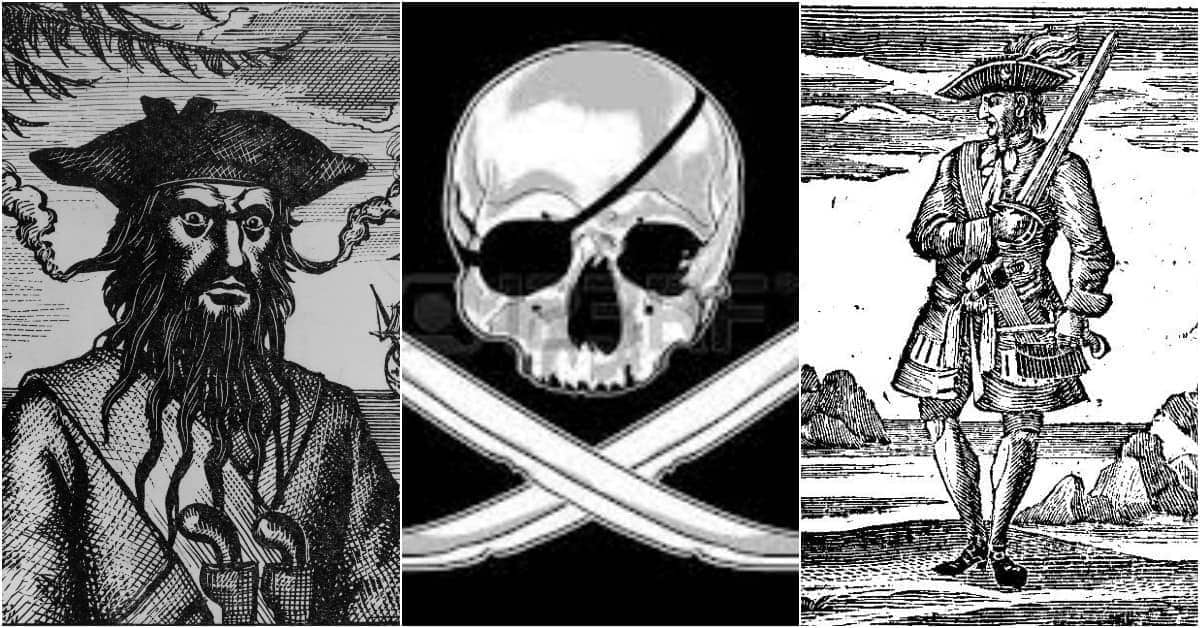Piracy – the act of violent robbery by seaborne attackers against ships or coastal areas in order to seize valuables – has been around for millennia, with the earliest documented instances in the historical record dating back to the 14th century, BC, when Mediterranean and Aegean civilizations barely survived a massive onslaught from seaborne raiders known as the Sea Peoples.
The predatorily opportunistic practice endured and flared up across the centuries, plaguing the Romans in the 1st century BC before it was suppressed by Pompey the Great, afflicting Europe and the Mediterranean with the rise of the Vikings in the Middle Ages, Ottoman corsairs during the Renaissance, massive pirate fleets that preyed upon Chinese shipping at whenever central authority weakened, and into the 21st century, where it recently flared up in the Indian Ocean with the proliferation of Somali pirates, and across the shipping lanes of the East Indies.
One of the most dramatic and fascinating periods of widespread piracy was that from the 16th to the 19th century, which includes the so-called “Golden Age of Piracy” from the 1650s to the 1730s, that saw the rise – and often grisly fall – of some of history’s best-known pirates, such as the dreaded Blackbeard, Captain Kidd, or Henry Morgan, whose colorful careers gave rise to an enduring genre of pirate fiction and movies. Following are twelve of history’s most notorious pirates from that period, spanning the Elizabethan Age to the 19th century.

Sir Francis Drake
The most celebrated and renowned seaman of the Elizabethan Era, Sir Francis Drake (circa 1540 – 1596) was an English privateer and admiral who led an adventurous seafaring career during which he became the period’s greatest pirate, preying upon Spanish shipping and coastal settlements, became the second man to circumnavigate the globe after Magellan’s expedition, during which endeavor he combined exploration with opportunistic plunder, and played a leading role in defeating the Spanish Armada in 1588.
Drake went to sea at an early age, and in his teens was enlisted by his relatives, the Hawkinses, a clan of privateers who preyed upon French coastal shipping. By the 1560s, he had risen to command his own ship and entered the slave trade, smuggling shackled captives illegally into Spain’s New World possession. During one such trip, Drake was cornered by Spanish authorities and escaped only with a heavy loss of life among his crew – an experience which left him with a lifelong hatred of Spain.
In 1572, he received a letter of marque from Queen Elizabeth, authorizing him to plunder any property of the Spanish crown, and armed with that authorization, he raided Panama but was wounded and forced to retreat. After recovering, he raided Spanish settlements around the Caribbean and returned to England in 1573 with a rich haul of gold and silver.
In 1577, he led an expedition of 5 ships to raid the Pacific coast of Spanish South America, which was wholly undefended in those days. Braving storms, he passed through the Straits of Magellan in his flagship, the Golden Hind then sailed up the coasts of Chile and Peru. Near Lima, he captured a Spanish ship which yielded 25,000 gold coins and soon thereafter captured a fabulously rich prize, the Cacafuego, a Manilla galleon which yielded a treasure of 80 lbs of gold, 13 chests of coins, and 26 tons of silver. His holds full of loot, he then crossed the Pacific, Indian Ocean, rounded the tip of Africa, and returned to England on September 26th, 1580, having circumnavigated the globe.
In 1585, Drake was put in charge of a fleet which harried Spanish shipping, captured Santiago in the Cape Verde Islands, and plundered Spanish settlements in Florida and Hispaniola. In 1587, he led daring preemptive raids against Spanish fleets assembling in Cadiz and Coruna for an invasion of England and inflicted significant damage which prevented their sailing that year. The following year, the combined Spanish fleet, the famous Armada, set sail, only for Drake to play a leading role in its dispersal and eventual destruction, particularly on the night of July 29th, 1588, when he organized fire ships against the Armada assembled in Calais, forcing its ships out of that port and into the open sea. There, they were scattered by a combination of English warships and adverse weather.
Drake’s eventful life finally came to an end in 1596, when he succumbed to a fever during an expedition against Spanish possessions in the West Indies. His career, with its turns from soldier and sailor to outright pirate, illustrates the era’s murky lines between legalized piracy, also known as privateering, whereby governments of the day issued their seafaring subjects letters of marque during times of war, authorizing them to prey upon enemy shipping, and outright piracy when those same seafarers preyed upon shipping without such a fig leaf of legality.

